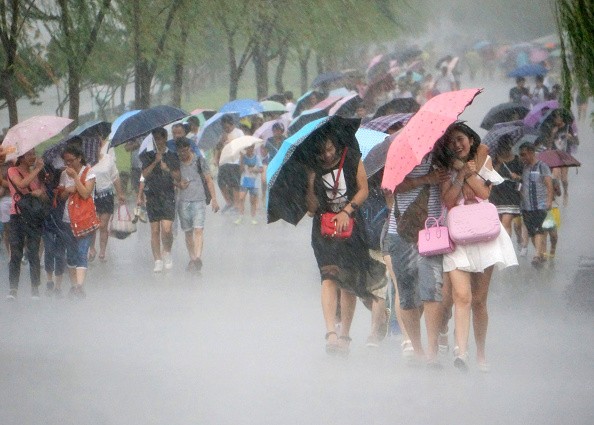At least five people were killed and 600 injured as Typhoon Megi battered eastern China and Taiwan, where authorities remain on alert for potential landslides.
Megi caused more than $10 million in damages as it swept across Taiwan on Tuesday before weakening into a tropical rainstorm after making landfall near the coastal city of Quanzhou in Fujian province early Wednesday morning, Taiwan's weather service report. At its peak, the typhoon packed winds of up to 188 kph (74 mph), China's National Meteorological Center said.
Despite weakening, Megi is expected to continue to pose risks to residents in eastern China through flooding downpours through the end of the week.
"While the risk of damaging winds has diminished, flooding rain will remain a concern. Mudslides can be triggered in the higher terrain," Eric Leister, a meteorologist with AccuWeather, reported on Wednesday.
One person died after several structures in Quanzhou, according to local media reports. Chinese state television showed people walking through knee-deep waters, while rescue workers were seen pulling stranded residents through the streets on inflatable boats.
In Taiwan, nearly 4 million homes were left without power and 10 provincial highways remained closed as of Wednesday. More than 4,800 people remained in emergency shelters Wednesday afternoon, Taiwan's official Central News Agency reported.
Taiwan's Central Emergency Operations Center reported three people suffered fatal falls while another died in a truck crash.
Many of the reported injuries were from falling and windblown objects. Among those injured were three state utility workers were hurt when their truck tumbled into a valley while they were trying to restore power in a mountainous area, the Central News Agency reported.
A spokesman for the center said Wednesday that emergency officials are closely monitoring Taiwan's mountainous regions for potential landslides, as well as to restore power and water in affected areas.



























